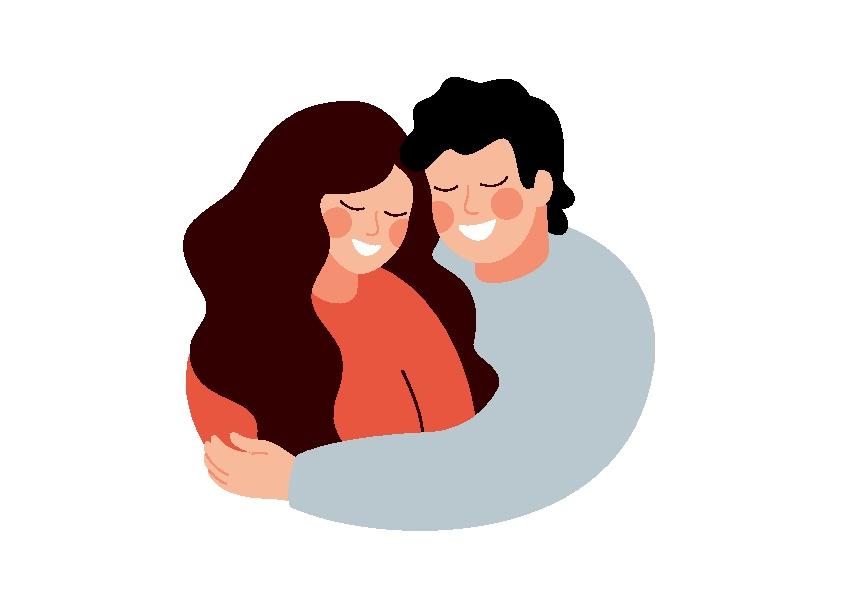Silences aren’t just ordinary lulls in conversation. They can be charged with deeper meaning, … More
We often assume that the emotional temperature of a relationship can be measured by what’s said out loud — be it in an intense argument or in the tenderness of an “I love you.” These are the obvious moments, and the ones that most draw our attention.
But in reality, the most telling moments between partners are often the quiet ones. Not just the comfortable, companionable silences but the ones that carry weight. The ones heavy with everything left unsaid.
Silence can soothe or it can sever. In healthy relationships, silence is restful. But in distressed relationships, silence can become a defense, a withdrawal or worse, a quiet exit from the emotional connection. The danger lies in how easily we learn to live with it — we call it exhaustion, we say we’re keeping the peace or convince ourselves that things are “fine.” Meanwhile, the distance quietly grows.
Here are two forms of silence that may be more revealing and more damaging than anything said out loud.
1. The Silence Of Emotional Withdrawal
Emotional withdrawal is a common response when someone no longer feels safe expressing themselves in a relationship. This kind of silence isn’t about peace or reflection — it often signals self-protection.
One may stop sharing thoughts or feelings when past attempts have led to criticism, conflict or dismissal. Over time, they learn that staying silent feels safer than risking a negative response. They might seem calm on the surface, but internally they’re managing discomfort and emotional distance.
This pattern is closely linked to hypervigilance, which is a heightened state of sensitivity to perceived threats. In a 2014 study published in the Journal of Anxiety Disorders, participants exposed to mild social stress showed increased pupil dilation and more visual scanning when looking at neutral images — physiological signs of alertness. Interestingly, they didn’t report feeling more anxious. This suggests that people can remain on high alert without being fully aware of it.
In relationships, this means a partner might appear calm or disengaged, but their nervous system may still be on high alert, bracing for emotional discomfort. Over time, they may begin to suppress their needs, avoid vulnerability and minimize their emotional presence.
Emotional withdrawal, then, isn’t always a deliberate choice to shut down. It can be an automatic response to an environment that no longer feels safe for open expression.
This withdrawal often shows up in relationships with anxious-avoidant dynamics, where one partner desires closeness but fears rejection, while the other withdraws to avoid emotional overwhelm. It leads to a breakdown in communication and, over time, weakens emotional connection.
Rebuilding safety in this context starts with awareness. Notice when silence is a reflex. Ask yourself: “What am I holding back, and why?” or “What response am I afraid of?” Even small moments of recognition can begin to shift this pattern.
2. The Silence Of Psychological Disengagement
This kind of silence is subtle, but often more troubling. It signals that one or both partners have withdrawn — not just from conflict, but from meaningful emotional connection.
On the surface, the relationship may appear functional: chores get done, conversations happen, routines are followed. But the emotional presence is missing. There are no check-ins, no real curiosity and no sense of shared inner life.
Research on a concept called “decoupling,” often explored in acceptance and mindfulness-based therapies, offers a useful lens. In clinical settings, decoupling refers to a weakening of the automatic link between internal experiences (like distress, cravings or pain) and behavioral responses. For example, someone might feel anxious without avoiding a situation, or experience an urge to smoke without acting on it. This response flexibility is considered adaptive, as it allows for more intentional and less reactive choices.
In relationships, however, a similar process can unfold unintentionally — and with less helpful consequences. When someone feels repeatedly dismissed, invalidated or emotionally let down, they may begin to disengage.
Emotional reactions become muted. Needs go unspoken. Over time, the person may stop expecting their partner to respond at all. They continue performing the roles of the relationship, but without the emotional engagement that gives those roles meaning.
This is known as psychological disengagement, and it’s a strong predictor of relational breakdown. Unlike conflict, it often flies under the radar because things seem “fine.” But beneath the surface, emotional connection is quietly unraveling. Left unaddressed, this pattern can lead to emotional divorce — a state in which the relationship continues in form, but not in feeling.
If this silence feels familiar, resist the urge to provoke a reaction just to break the stillness. Instead, begin with a more honest reflection: “When did I stop reaching for them?” “When did they stop reaching back?” Reconnection doesn’t begin with confrontation. It begins by tuning into the parts of yourself that went quiet first, not out of fear, but out of the belief that no one was listening.
Remember, silence can either be reverent, or it can be a retreat from emotional risk. It can say “I feel safe with you,” or it can scream “I’ve given up on being understood.”
In relationships, the most dangerous silences are the ones that go unacknowledged — the ones that become so normal we forget they weren’t always there.
So, listen. Not just with your ears, but with your intuition. When words are absent, ask yourself: “What’s this silence protecting?” “What truth is it avoiding?” “What need is it hiding?”
Often, what’s not said is the most important message of all.
If either silence feels familiar, take a moment to reflect on where your relationship stands using this science-backed test: Relationship Satisfaction Scale








